The development of pottery constituted an undeniable turning point in human history. Ceramic tiles have coexisted with humans for millennia, differentiating themselves from other media via their unique combination of beauty and use.
Islamic tile art is distinct from other ceramic art since it does not portray people or animals. In place of this, Islamic tile art combines magnificent geometric patterns, calligraphy, and tessellations to reflect the universe in its unique spiritual form. This online exhibition will explore the intriguing world of Islamic tile art, including its historical background, function, production processes, and influence on contemporary society.
The origins of Islamic tile artwork
The origins of Islamic tile art may be linked to glazed bricks uncovered in the Chogha Zanbil Ziggurat in Iran, which date back as far as 1250 BCE. In the seventh century, the Islamic religion was established. In accordance with the doctrine of the new faith, Muslim artists abandoned depictions of humans and animals in favor of geometric patterns that signified Allah’s infinite essence. Samarra, Iraq, has established itself as a notable tile production center by the ninth century CE.
This specific sculpture is a representation of tile artwork from Samarra that was exported to Tunisia. In the eleventh century, Islamic tile art originated in Persia and was first associated with the Great Mosque of Herat.
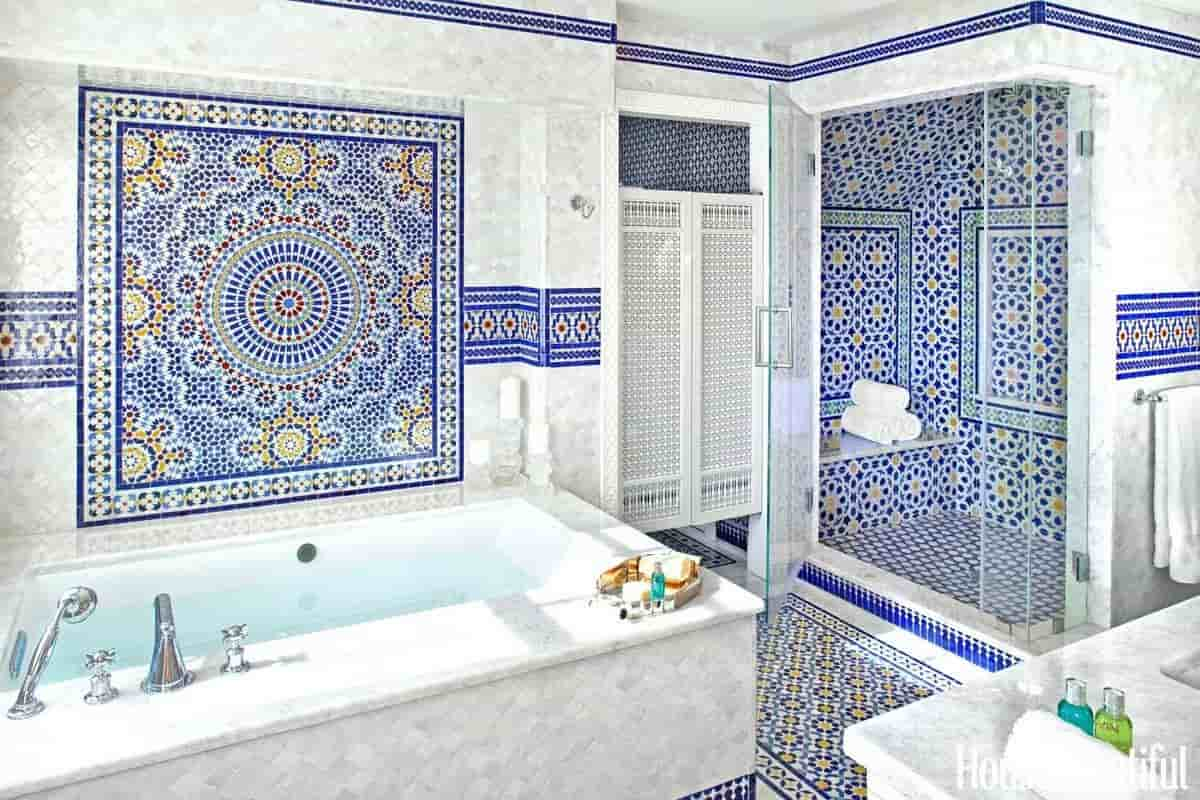
While interior tile art is seen in the dome chamber, outside tile art is visible on the minaret. Kashan, Iran, was the primary center for tile manufacture by the 13th century CE, and the Persian word for tile at the time was “Kashi.” After the emergence of the Ottomans, Mughals, and Safavids, tile painting became less popular in favor of other forms of art throughout the Islamic world.
Muslim tile art techniques
The tiles were utilized in mosques for religious expression and as decorative components in homes for both functional and aesthetic purposes. Various tiling techniques and decorations regularly communicate poetry, stories, religious ideas, and even currency. Typically, the human form was not shown in Islamic religious tile art; this may be because some Islamic beliefs, such as aniconism, forbade it. Although there was a significant amount of portrayal of humans in secular art in the Islamic world, the figures were typically highly stylized due to religious constraints.
In the current Islamic world, aniconism is rarely followed or enforced outside of certain religious contexts. The Blue Mosque, which serves as both a memorial and a place of worship for Hazrat Ali and the Islamic faith, is adorned with tile art.
Below are two examples of tile art in domestic contexts. The Damascus Room is a form of winter reception room that was frequently found in the late Ottoman Syrian residences of notable and rich individuals. The home’s poetry-inscribed walls and plaster ceramic tiles with polished surfaces suggest that it belonged to the religious elite. Similarly, the below-mentioned wall panel is composed of multicolored marble mosaic that was likely employed to embellish Egyptian and Syrian royal residences and religious structures. Consequently, tile art had both religious and social value.
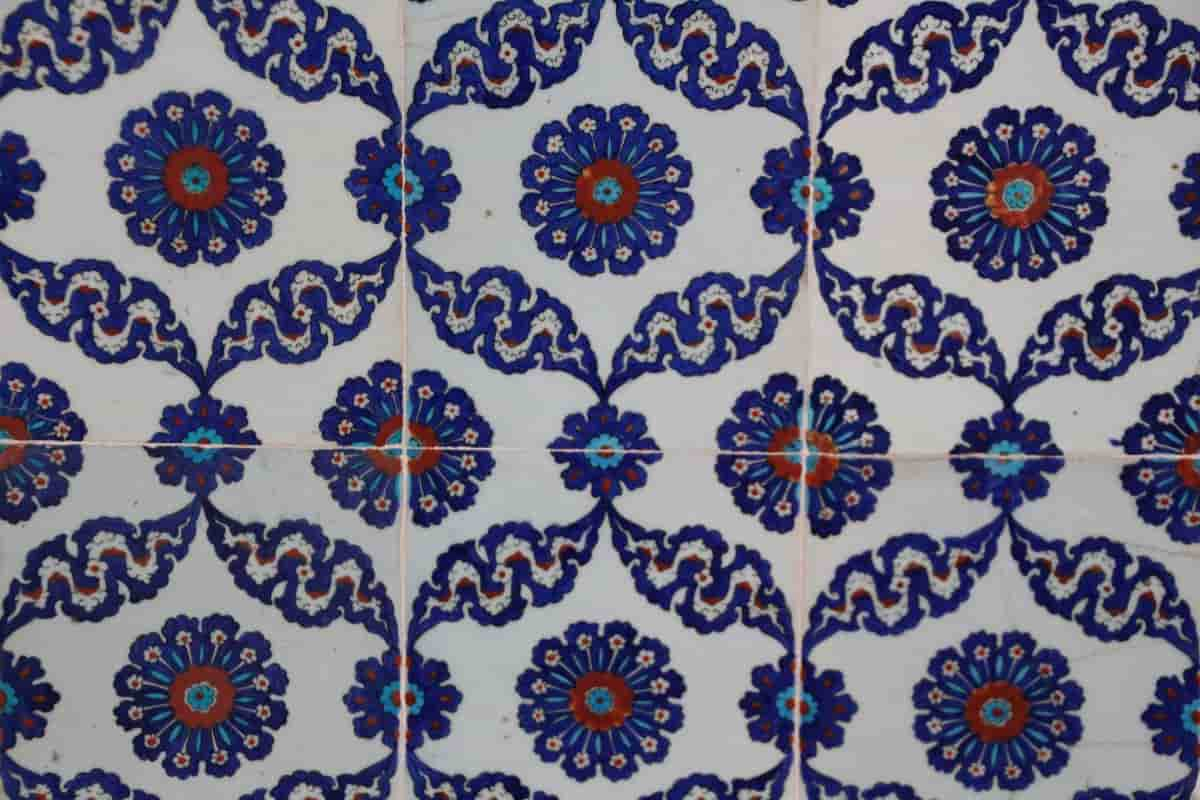
Methods from the Scientific Study of the Creative Process
Almost all ceramic art tiles are created using the following procedure:
- how to acquire clay (earthenware, stoneware, or porcelain)
- The clay is wedged to eliminate all air spaces (air pockets can cause the final tile product to crack or break)
- Adding artwork or lettering to the tile by carving or inking
- The drying and bisque firing of clay increases its durability.
- Glazing the tile to impart color or a glossy finish using a mixture of glass, clay, and pigment. Additionally, the glazing may be fully transparent.
- When burned in a glaze, an object undergoes vitrification.
The chemical process of creating glass is termed vitrification. Typically, this is achieved by transforming the crystalline silicate components of the glaze into a noncrystalline atomic structure. As a result, ceramic tiles have a smooth, glass-like surface. In the section that follows, the common painting and glazing techniques and materials used in Islamic tile art will be presented.
The art of painting on Underglaze
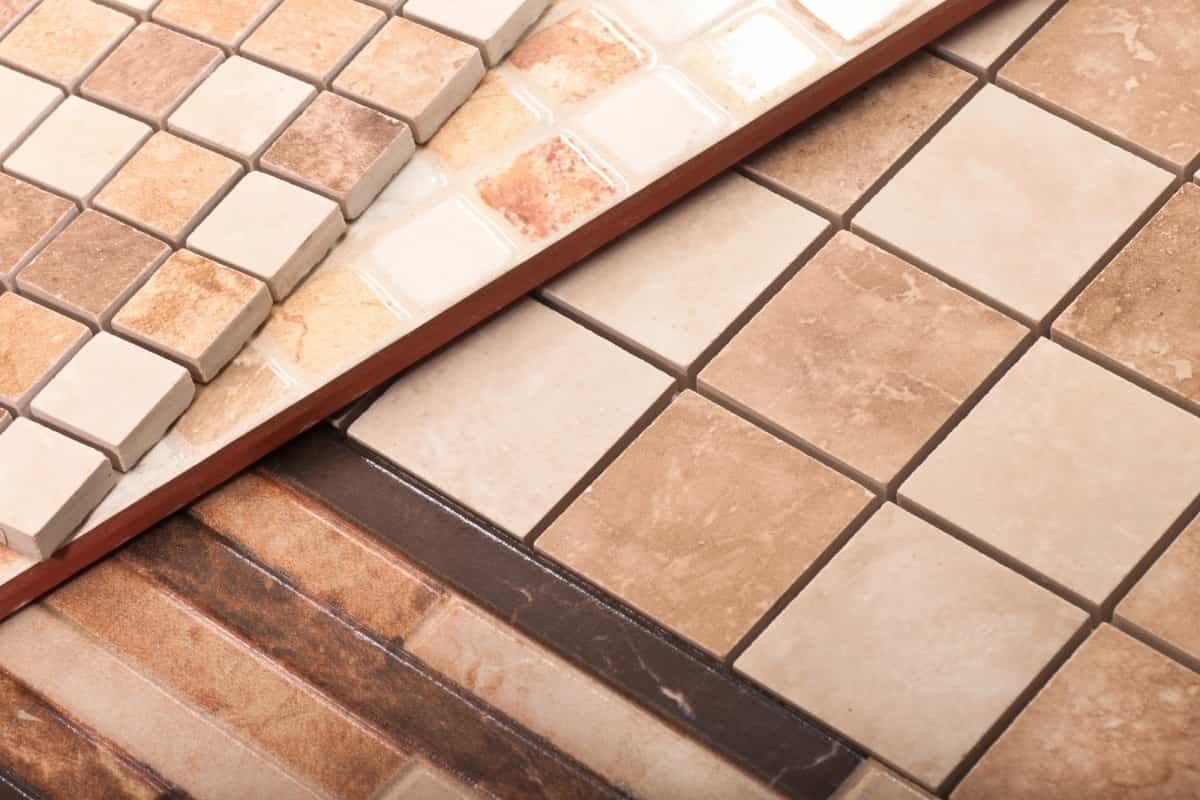
Any pattern applied on ceramic tile prior to the application of glaze is known as underglaze painting (before step 5). Underglaze enamel can be used to paint both wet clay and bisque-fired clay. Underglaze painting makes use of slip, a mixture of clay, water, and pigment. When the ceramic tile is baked with a translucent surface, it adds visual depth and uniqueness to a design. This was a widespread technique that is being employed in ceramic art today.
Employing Overglaze Luster
A thirteenth- or fourteenth-century Iranian star tile made of lusterware with interwoven cranes (Honolulu Museum of Art) Overglaze-luster painting involves covering a tile with an opaque white glaze, burning it, and then painting a pigment composed of silver and copper on top of the burnt tile. The tile is subsequently burnt a second time.
The silver and copper oxides floating on the surface of the glazed tile give it a reflective sheen. It undergoes two glaze-firing processes in essence. This is most evident in the crane-and-crane star-shaped lusterware tile. For this specific tile, a stonepaste base, polychrome-colored clay, and a luster glaze were utilized. The method’s long-lasting, brilliant colors accentuate the tile’s delicate lettering and carving.
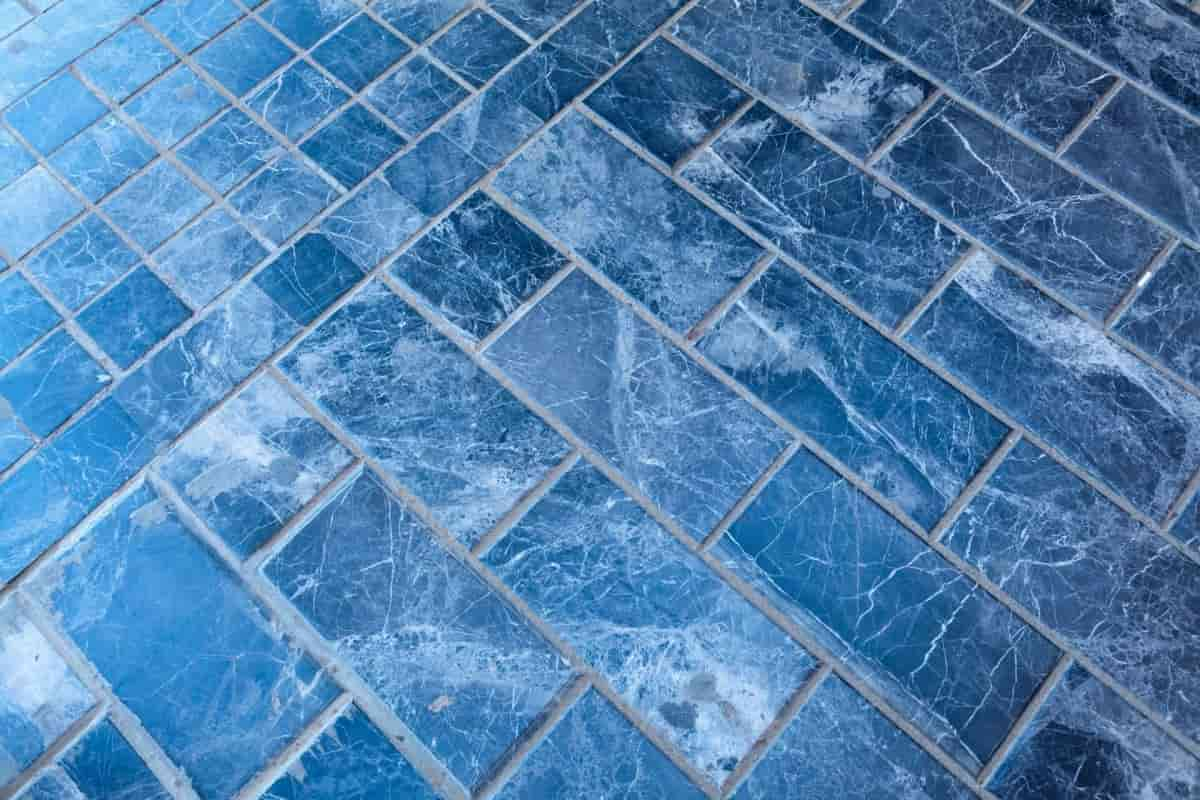
Colorless Glaze
To achieve a uniform look, monochrome-glazing means glazing mosaic tiles of the same hue. Mosaic tiles are arranged in complicated patterns to form inscriptions and symbolic artwork. Due to the fact that it can be time-consuming and costly, it occurs frequently in religious contexts.
Consequently, mihrabs, or prayer nooks, in mosques commonly include tiles with monochrome glazes. As represented by the mihrab, Muslims face Mecca, the Muslim holy city in Arabia, when they pray. In the figure below, a mihrab is surrounded by mosaic tiles that spell out verses from the Qur’an.
‘Cuerda Seca’
The cuerda seca (Spanish: “dry cord”) technique employs thin bands of oily materials to separate water-soluble glazes in order to combine many colors onto a single tile. Due to the tendency of glazes to mix together during the glaze-firing process, the oily substance retains color differentiation between glazes while also leaving behind a “dry string” of unglazed tile.
Typically, a dark pigment is added to the waxy grease to create a contrast between colours. The square tiles are then arranged in large panels to form pictorial landscapes with people. This Safavid panel’s garden setting, which incorporates plant and animal motifs, is composed of twelve cuerda seca tiles.
Common Islamic tile art attributes
Frequently, Islamic art shows religion and Allah, its God, as an infinite and divine being that is superior to all other beings on earth.

Diagrams and Designs
Islamic tile art is differentiated from other styles of tile art by its use of geometric patterns comparable to those employed by the Greeks and Romans.
The devotion of geometric designs to Islamic aninism contributed to their appeal. Instead of emphasis on religious figures or sacred animals, the use of geometric patterns and their intricacy inspired spiritual and enlightened thought. The continuous, looping, and scrolling patterns yet symbolized God’s infinite creations and created a sense of divine unity.
Arabesque
Arabesque is a name used to describe the interlaced floral motifs seen in Islamic ceramic tile art and weaving. Similar to the use of geometric patterns, arabesque patterns avoid highlighting actual ideas such as growth or vitality.
Instead, the flowers are employed as religious symbols; the cypress, for instance, is widely used to represent humbling oneself before God. The scrolling, rhythmic, and interwoven nature of the patterns exemplify both the impermanence of worldly things and the eternity of God.
Calligraphy
Arabic calligraphy is one of the simplest creative techniques and is frequently used to portray the Quran and other religious texts, praise monarchs, poetry, and aphorisms. This contrasts with other Islamic art characteristics linked with the religion.
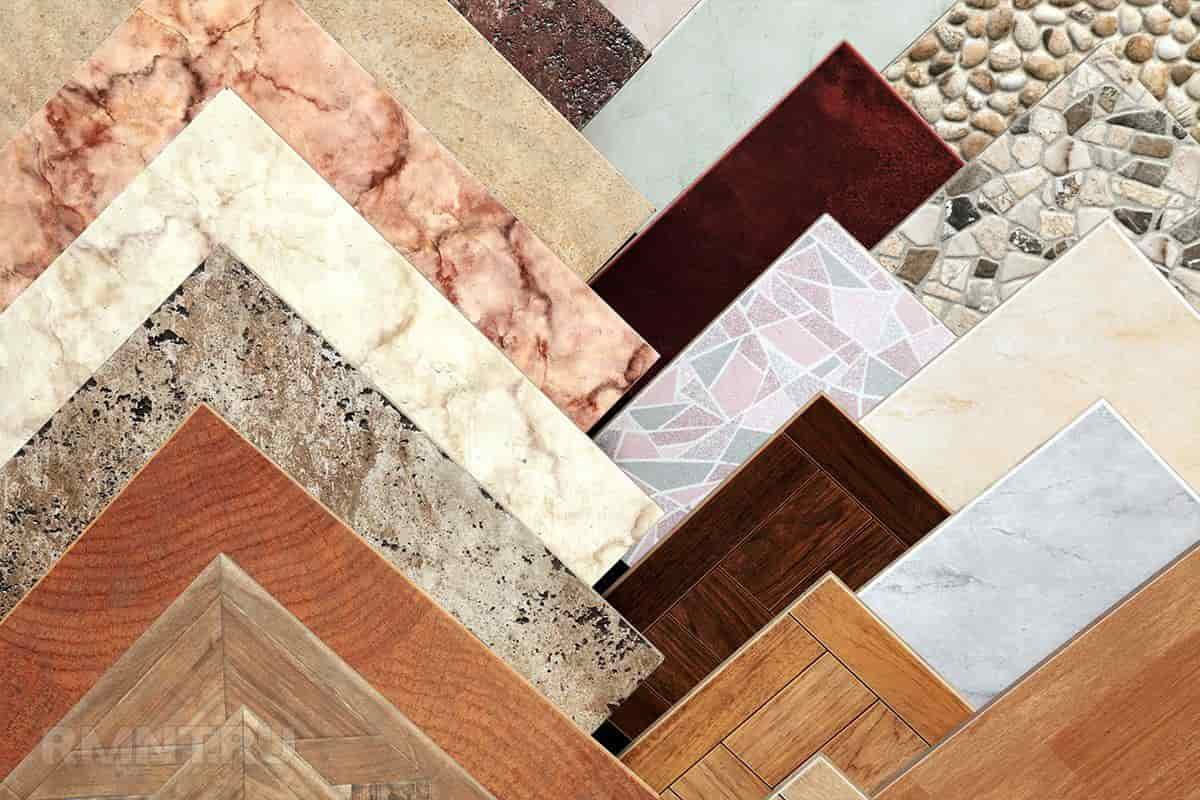
In addition, it permits artists to worship and remember their God without devoting themselves to idols or utilizing iconography. Calligraphers can depict Islamic values and religion without comparing them to living creatures.
Permanent Legacy
Islamic tile art influenced other historical art styles without question. The rise of Islam in the Middle East contributed to the popularity of the Arabesque tile design. Techniques associated with the cuerda seca, which were discovered in Muslim Spain and Portugal, expanded as well.
The diffusion of ideas was not entirely unidirectional; foreign cultural influences unquestionably influenced the evolution of Islamic tiling designs. As illustrated by the paintings from Lebanon, Iraq, and Palestine, even contemporary art has been influenced by early Islamic tile art. The art’s legacy is still fairly powerful today. Mathematicians of the present day have applied tessellation techniques to investigate the evolution of metal alloys and atom packing.
Famous practitioners of the style include Golnaz Fathi and Lalla Essaydi. The Hurufiyya movement, which originated in the early half of the 20th century, seeks to combine Islamic calligraphy and modern art. The rejection of Western creative techniques reflects the revolutionary nature of many of these artists’ original nations at the time, therefore bolstering a sense of national identity.
Today, artists like as Ali Rafei sustain the Hurufiyya movement via their works. If you need more information regarding Islamic ceramic tiles’ history and art contact our experts.












Your comment submitted.